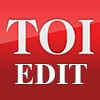Historically, the food industry has championed an unhealthy status quo. For example, the US cavity prevention initiative of the 1960s did not adopt an explicit guide to reducing sugar intake. Instead, industry stakeholders were able to promote alternatives such as fighting plaque. Today in India, the NIN-ICMR recommendation to set sugar thresholds for packaged foods and beverages is called “unrealistic” by company executives. The appropriate adjective is “essential.”
A Bitter Formula | I was bitter to learn that Nestle adds no sugar to the infant formula they sell in Europe, but does so in India. Food and beverage giants have different quality standards in different countries. But I was also bitter to learn that the 2011 Dietary Guidelines for India actually recommended giving infants one teaspoon of sugar per 120-180ml of milk, six to eight times a day. This year's update to the guidelines was most needed. It responds to the science that can no longer be silenced, which is starting to treat sugar as the same level of health threat as tobacco, from East to West.

Adulterated Drinks | Setting a sugar threshold is a very important first step towards mitigating Indians' heavy sugar dependency. This will need to be followed by the much harder task of educating the public about the new labels and monitoring their accuracy. The Indian government's recent advisory banning some popular brands from using the “health drink” label is also important in this context. More informed consumers will read labels and check nutritional details rather than being swayed by “health” claims. A better oversight regime would investigate the veracity of such claims 24/7.
Junk Mithai | But what about your local mithai shop? Maybe there is one or more. Either way, this sugar bomb is free to explode if it wants to. No label or threshold can stop it. Clearly, many of the dangerous eating habits that are considered traditional also need to change. Schools must play a key role in this transformation. Starting good eating habits is much easier than breaking bad ones.
Facebook Twitter Linkedin Email
This article appeared as an editorial in the print edition of The Times of India.
End of article



